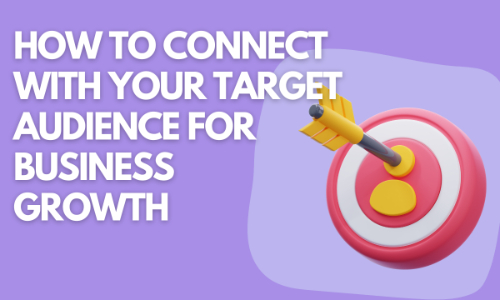


No matter how great your product or service is, it’s meaningless if you can’t connect with the right audience. Reaching your target audience is key to any business’s success. But how do you define who they are, where they are, and how to communicate with them effectively? In this blog, we’ll walk you through practical strategies that will help you identify your ideal customers and engage them in ways that drive business growth.
Step 1: Define Your Target Audience
The first step in reaching your target audience is identifying who they are. This goes beyond basic demographics like age, gender, and location. Consider deeper insights such as:
By answering these questions, you can create a detailed customer persona, a representation of your ideal customer. This persona will guide all of your marketing efforts, helping you target the right people with the right message.
Step 2: Research Where Your Audience Spends Their Time
Once you’ve defined your audience, the next step is figuring out where they are. In today’s digital world, your target audience is likely to be spread across various online and offline platforms. Ask yourself:
Research the platforms where your target audience hangs out the most and focus your marketing efforts there. This is where you can connect with them through organic content, paid ads, or direct messaging.
Step 3: Craft Your Messaging Around Their Needs
The next step is creating content that resonates with your target audience. Your messaging should be clear, empathetic, and focused on their needs. Here are some tips:
Step 4: Engage with Your Audience Consistently
Once you've established where to reach your target audience and what message to send, the next step is ongoing engagement. Consistency is key. Here’s how to keep your audience engaged:
Step 5: Measure and Adjust Your Strategy
Once you’ve implemented your targeting strategies, the next crucial step is to track your results. Use analytics tools like Google Analytics, social media insights, or customer surveys to measure the effectiveness of your efforts. Key metrics to monitor include:
Based on the data, fine-tune your approach. For example, if you find that your audience is engaging more on Instagram than Facebook, shift your focus to Instagram. Or, if certain types of content (like educational blogs) are generating more leads, prioritize those over promotional posts.
Step 6: Refine and Expand Your Audience
As your business grows, your audience may evolve. You may start attracting different types of customers or find new niche markets. To stay competitive, keep refining your understanding of your target audience:
Conclusion
Reaching your target audience is not a one-time effort; it’s an ongoing process that requires research, adaptation, and consistent engagement. By understanding who your customers are, where they spend their time, and how to communicate with them effectively, you’ll be able to build strong connections that drive business success. Keep refining your approach, measure your results, and don’t be afraid to adjust when needed. With the right strategy, your business can reach and resonate with the audience that matters most.